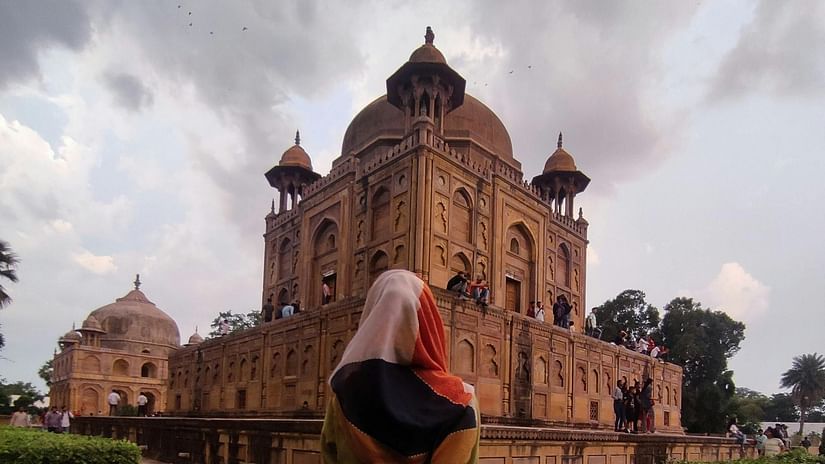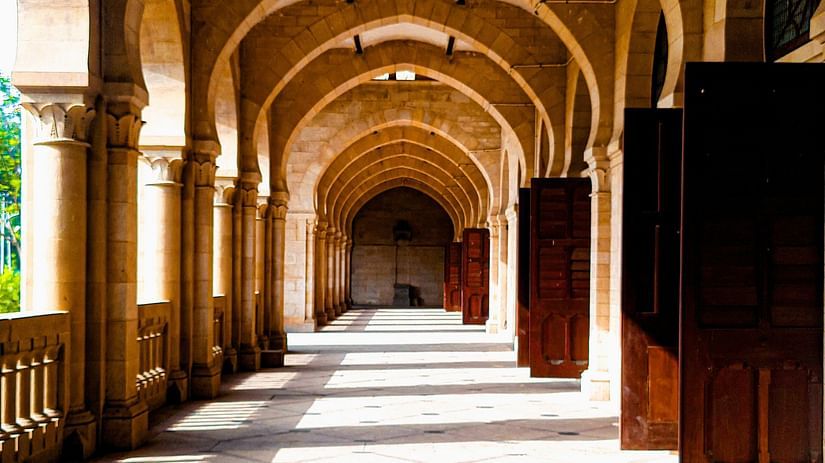- Tring Tring: Ringing in Fun and Flavour in Shillong!
- Arwah Cave, Cherrapunji, Meghalaya
- Swaraj Bhavan
- Alopi Devi Mandir, Prayagraj
- Delhi to Agartala
- Poush Sankranti Festival
- Bishop Falls Shillong
- Cathedral of Mary Help of Christians Laitumkhrah Shillong Meghalaya
- Trip to Kolkata
- Mumbai to Prayagraj
- Trip to Prayagraj
- Sepahijala Wildlife Sanctuary & Zoo
- Bangladesh to Agartala
- Lady Hydari Park Shillong Meghalaya
- Rainbow Falls Cherrapunji
- Babu Ghat
- New Year Party in Prayagraj
- Minto Park Prayagraj
- Durga Puja in Agartala
- Don Bosco Museum Shillong
- Best Time for Shillong Tour
- Meghalaya Itinerary For 4 Days
- Demseiniong Falls
- Allahabad 3-Day Itinerary
- Ganga Aarti in Prayagraj
- Unexplored Places in Tripura
- Best Time to Visit Tripura
- Sweet Falls Shillong
- Nehu Waterfall
- Offbeat Places in Kolkata
- Adventure Sports in Shillong
- Spread Eagle Falls
- Lyngksiar Waterfall
- Blue Lagoon Meghalaya
- Weekend Getaway in Kolkata
- Handicrafts of Tripura
- Agartala Museum
- Delhi to Prayagraj Route
- Sightseeing in Allahabad
- Prayagraj Hanuman Mandir
- Sightseeing in Agartala
- Kharchi Puja Agartala
- Sightseeing In Shillong
- Tourist Places in Shillong
- Sightseeing In Cherrapunji
- Places to visit in Cherrapunji
- Cherrapunji Rainfall
- Discover Cherrapunji's History at Polo Orchid Resort
- Cherrapunji Rainfall
- History of Cherrapunji
- Ujjayanta Palace Agartala
- Best time to visit the Seven Sisters of India
- Festivals of Kolkata
- Kumbh Mela Prayagraj
- Allahabad Fort
- Unexplored Places in Shillong
- Shillong Tourist Places
- Tourist Places in North East India
- Folk Dances of North East India
- Trekking in Cherrapunji
- Tourist Places in Cherrapunji
- Historical Places in Prayagraj
- Famous Temples in Prayagraj
- Shillong in Summer
- Temples in Shillong
- FESTIVALS IN TRIPURA
- JAGGANATH BARI AGARTALA
- Famous Foods in Prayagraj
- Triveni Sangam Prayagraj
- Offbeat Places in Meghalaya
- Unique Sweets - Shillong
- Shillong View Point
- Parks in Agartala
- 7 Beautiful Villages in India
- Bamboo Trekking in Meghalaya
- Kynrem Falls
- Best Places to Eat in Shillong
- Best Cafe in Shillong
- Unexplored Places in Meghalaya
- Historical places in Kolkata
- Famous Sweet Shops in Kolkata
- Shillong in April - Spring in Shillong
- Best Places in Shillong for Couples
- Cherrapunji Eco Park
- Khasi Monoliths Meghalaya
- Famous Food of Tripura
- Dainthlen Falls Cherrapunji
- New Year Celebrations in Kolkata
- Seven Sisters of India
- Best Food in Shillong
- Durga Puja in Kolkata, 2023
- Mesmerising Shillong Autumn Festival
- Enchanting Shillong in Winter
- Experience Kolkata in Winter Months
- Exploring Kolkata's Rich Heritage
- Indulge in the Dover Lane Music Festival
- Pre-wedding Shoot Locations in Kolkata
- A Road Trip From Guwahati
- The Iconic History of Howrah Bridge
- Wedding Extravaganza at Floatel Kolkata
- Lady Hydari Park in Shillong
- The Wild Fruits of Meghalaya
- Thangkharang Park and Ka Khoh Ramhah, Cherrapunji
- Mawkdok Dympep Valley - A Gem in Meghalaya’s Tourism Circle
- The Cleanest Village in Asia - Mawlynnong
- Mawsynram Village - The Wettest Place on Earth
- Don Bosco Museum - A Glimpse Into Indigenous Lifestyle
- A Visit to Cathedral of Mary Help of Christians
- A Visit To Udaipur, Tripura
- Tripura: History, Culture & Heritage
- The Unique Modes of Transport in Kolkata
- Laitlum Canyons
- Nohkalikai: India's Highest Plunge Waterfall
- Agartala gets it’s first 5-Star Hotel
- Sohra - The Land of Oranges
- Mawryngkhang Trekking Destination at Wahken
- Best Destination Wedding Resorts in India
- Safest Places in India for Solo Female Travellers
- Open-air dining at Sky Grill
- A weekend getaway: 2 day itinerary for Cherrapunji
- Reasons to Celebrate Weddings at Cherrapunji
- Raise a toast at The Grand Bar
- A Cliffside Dining Experience At Sohra House, Cherrapunji
- The Sweetness of Pineapples in Agartala
- Seize the time at Polo Floatel, Calcutta
- Don't lose out on luxurious experiences!
- Ultimate Tour Guide Through Meghalaya
- Rejuvenate at Woodstock Resort
- Your 2-Day Itinerary to a Weekend at Polo Agartala!
- Timeless Romantic Experiences at Floatel!
- Experience Food Heaven At Our Cafés
- Multi-cuisine feasts delivered to your door from Polo
- The Newest Cloud Kitchen In Kolkata:Room Service By Polo Floatel
- Celebrate your wedding amidst nature at Polo Orchid Resort
- Exquisite Dishes from Khasi Cuisine
- Places to Visit in Agartala
- Cocktail Pre-Mixers by Polo Floatel
- Celebrate your wedding at Agartala’s first five-star destination
- Polo Orchid Resort – Ready to welcome you again!
- A Road Trip Across Northeast India
- Exploring the Greens of Agartala
- Unakoti: Tripura Heritage Site
- Waterfalls in Cherrapunji Sohra Waterfalls
- Best Time to Visit Cherrapunji
- Living Root Bridges in Cherrapunji
- Journey through the Abode of Clouds, Meghalaya
- Cuisines of Shillong
- Cherry Blossom Festival in Shillong
- Woodstock Music Festival
- Winter activities in Cherrapunji
- Meghalaya Travel Itinerary
- Christmas in Meghalaya
- Historical Places in Kolkata
- Kolkata Cuisine - Best Traditional Dishes
- Things to do in Agartala
- Tips & tricks for first time hikers in Cherrapunji
- Redefining amenities luxuriously!
- A cocktail of experiences awaits you at Sky Deck - Constellation
- Ride the tide of nostalgia, love, scenic beauty & more
- Explore the Magical Caves in Cherrapunji
- The Sacred Groves in Meghalaya
- Flora and Fauna of Meghalaya
- Unboxing the Northeast
- Celebrity Visit in Hotel Polo Towers Agartala
- Tranquil Vibes at Polo Orchid Resort Spa
- Shopping at Police Bazaar in Shillong
- A Peek Into the Khasi Culture
- Exploring Meghalaya’s Wildlife
- Things To Do in Kolkata
- Planning A Road Trip to Agartala
- Musical Heritage of Kolkata
- Celebrating Poila Boishakh
- Breakfast with a view at Cherrapunji
- The Amazing Nightlife of Shillong
- Top 5 Activities to do in Cherrapunji
- Shillong Monsoons: Nature Blooming in all its Glory
- Indigenous Handicrafts of Meghalaya
- Monsoon in Meghalaya
- Wildlife Sanctuaries in Tripura
- Unique Dining Experiences in Kolkata
- Monsoon in Kolkata
- What makes Kolkata an amazing travel destination?
- What makes Cherrapunjee a destination wedding hotspot?
- The Rock Capital of India
- Laitkor Peak in Shillong
- A Trip to the Majestic Elephant Falls
- The Picturesque Laitlum Canyon in Shillong
- The Unique Culture & Heritage of Tripura
- The Vibrant Festivals in Meghalaya
- A Trip to Krem Mawmluh Cave, Cherrapunji
- Best Time to Visit Shillong
- A Trip to Ward’s Lake, Shillong
- A Taste of Indigenous Life at Shillong
- Exploring the Art Culture of Kolkata
- The Famous Museums in Kolkata
- An occasion of a lifetime at Polo Orchid!
- The Regality of Agartala’s First 5-Star Hotel
- Bed, Breakfast and the Perfect Staycation at Woodstock Resort
- A Trip to the Historical Places in Meghalaya
- Mawsmai Nongthymmai Eco Park
- A Refreshing Trip to Dawki
- A Fun Trip to Umiam Lake
- Shillong Golf Course - The Glen Eagle of the East
- The Annual Kolkata International Book Fair
- Jabalpur Marble Rocks
- Shop Like a Pro at Kolkata's Local Markets
- Visit the Popular Durga Puja Pandals in Kolkata, 2021
- Street Food in Kolkata: A Culture Trip
- Places to Visit in Prayagraj
- Famous Foods of Jabalpur
- Best Time to Visit Jabalpur
- Experience Shreya Ghoshal’s Mesmerizing Concert in Kolkata
- Stay at Polo Floatel for Alan Walker’s Concert in Kolkata
- Polo Floatel: The Perfect Stay for Bryan Adams Concert Attendees
Allahabad Sightseeing Places: An Unforgettable Journey
Prayagraj, formerly known as Allahabad, is a city steeped in spiritual, cultural, and historical significance. Renowned as one of the holiest pilgrimage sites in India, it is celebrated in ancient scriptures as "Prayag" or "Teertharaj." Situated at the confluence of the Yamuna, the Ganges, and the mythical Saraswati rivers, Prayagraj draws visitors from around the globe to explore its grand temples, fascinating historical sites, and lively festivals. When it comes to sightseeing in Allahabad, the city offers a captivating array of attractions. Let’s delve into some of the top local sights in Allahabad, showcasing what makes this city uniquely enchanting.
Allahabad sightseeing places
Allahabad Fort: The Allahabad Fort, constructed in 1583 by Emperor Akbar, is a prime example of Mughal architectural excellence. Situated on the Yamuna's banks, this enormous fort is a major feature of Allahabad's local sightseeing. The 232 BC Ashoka Pillar and the Saraswati Koop, which is thought to be the Saraswati River's source, are located inside the fort. The portions of the fort that are open to the public provide a window into the rich historical past of the city, even though the Indian Army occupies a large portion of it. Offer prayers at the renowned Patalpuri Temple and be in awe of the Akshayavat, an eternal banyan tree. Enjoy the breathtaking views of the river.


Triveni Sangam: The Triveni Sangam is without a doubt Allahabad's most well-known tourist attraction. This is where the sacred rivers Ganges, Yamuna, and Saraswati meet, forming a powerful spiritual magnet for pilgrims. A visit to the Sangam is regarded as extremely auspicious, especially during the Kumbh Mela, when millions converge for a sacred dip. Boat trips are provided to transport tourists to the exact confluence site, offering a peaceful and spiritually uplifting experience. The Triveni Sangam is considered to be the same location where drips of nectar dropped from the gods' pitchers. Hence, it is thought that taking a bath in the Sangam will cleanse one's sins and clear the path to heaven.
Anand Bhavan: Another important landmark in Allahabad is Anand Bhavan. The Nehru family's ancestral home was this old mansion, which has been transformed into a museum. It offers an enlightening look into the life and times of Jawaharlal Nehru, the first prime minister of India, and his family. History buffs should not miss the museum, which is home to a variety of private antiques, images, and records. You can also visit the nearby Swaraj Bhavan, the birthplace of Indira Gandhi.

Khusro Bagh: The magnificent Khusro Bagh garden and tomb complex exemplifies the magnificence of Mughal building design. The tombs of Shah Begum, Khusrau Mirza, and Nithar Begum—the wife, eldest son, and daughter of Emperor Jehangir, respectively—are located in this lovely walled garden and Mughal burial complex. All of them are still mostly intact. Observe the intricately painted stars and floral embellishments at the emperor's daughter's tomb, the three-tiered tomb of the emperor's wife, the ornate Mughal architecture at the entrance gate, and the layout of the lush surrounding gardens.
University of Allahabad: This is one of the oldest universities in India. A significant landmark in the city is Allahabad University. The university was founded in 1887, and its expansive campus is home to lovely colonial buildings and verdant gardens. Notable structures that are well worth seeing are Muir Central College and the old Senate Hall. The intellectual and academic ambience of the institution gives the touring experience in Allahabad a special charm.
All Saints Cathedral: A striking example of Gothic Revival architecture, the Anglican church—locally known as Patthar Girja—is a must-visit attraction in Prayagraj. Completed in 1891, this historic church features stunning stained glass windows, intricate stone carvings, and a serene interior. Visitors to this Prayagraj sightseeing gem can admire its well-preserved 125-year-old glass and marble work, as well as plaques commemorating various British citizens who lived and died in India. The church is set amidst beautiful gardens, ideal for a stroll. As a highlight of Prayagraj sightseeing, it stands as one of the finest examples of colonial architecture in India.


Stay in Prayagraj (Allahabad):
Prayagraj, also known as the City of Kumbh, is regarded as one of the holiest towns in India. The city has both a modern perspective and a strong historical culture. Experience the tranquillity of this lovely city by staying at the 3-star Max Hotel in Prayagraj, which guarantees a sumptuous stay accompanied by friendly service. Max Hotel Prayagraj have different categories of comfortable rooms.
You can host the greatest social and business events in the two exquisite and roomy banquet halls, The Darbar Hall I and II, located in the Max Hotel in Prayagraj. With their cutting-edge amenities and inventive menu options, these banquet halls are the ideal locations for planning an unforgettable event. Our Prayagraj banquet halls can hold 200–250 people. To top it off, our skilled staff offers tailored services to support you in planning an event that is a success.